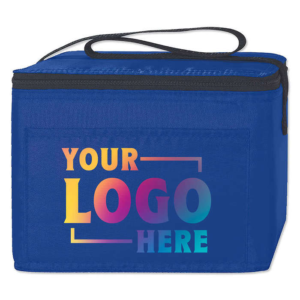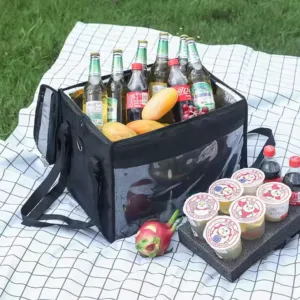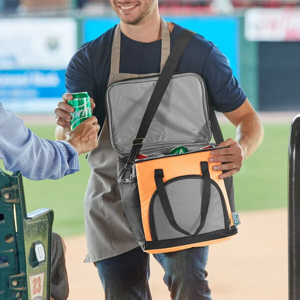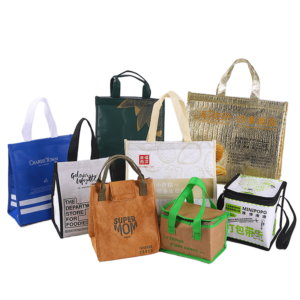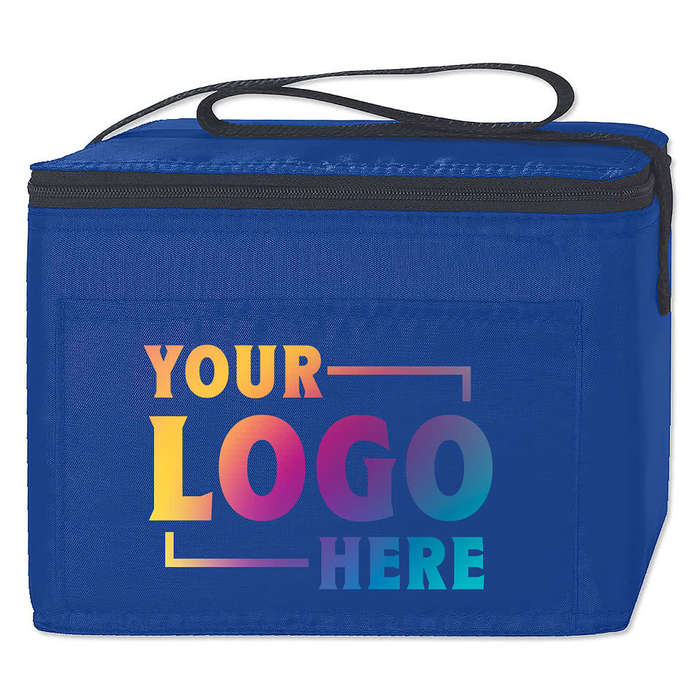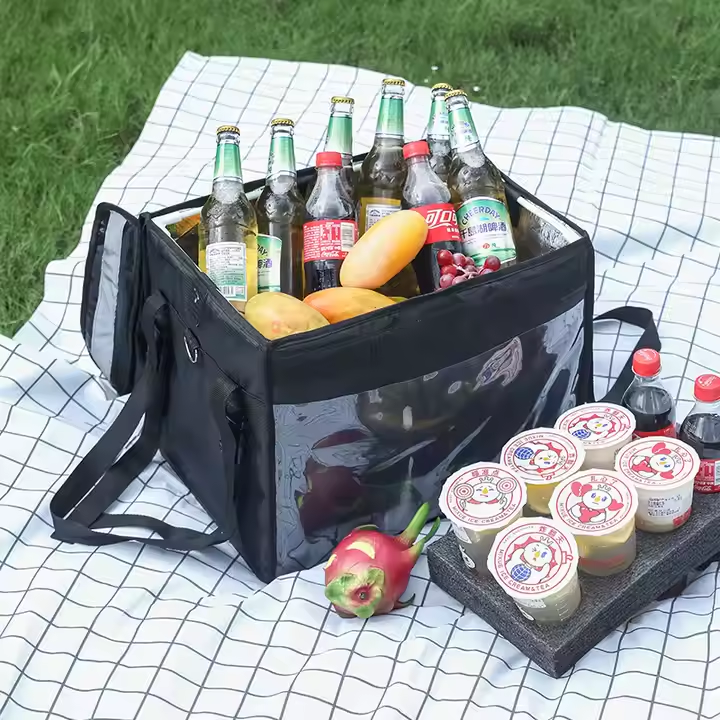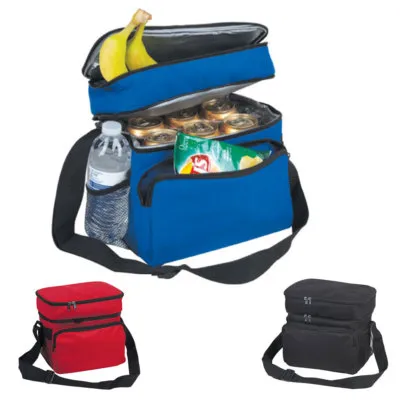Cooler bags have become an essential tool in the food delivery industry, ensuring temperature control1, food safety2, and efficient logistics. This article explores their multifaceted role in modern delivery operations.
The Role of Cooler Bags in Modern Food Delivery Logistics
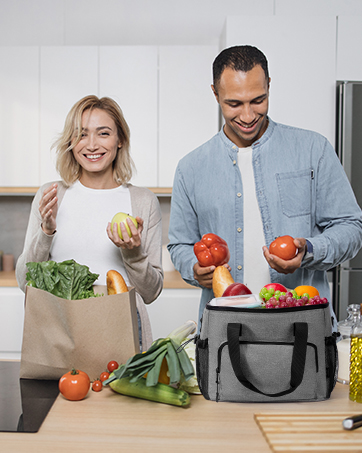
Cooler bags maintain food temperature, reduce spoilage, and enhance operational efficiency3, making them crucial in today's food delivery logistics.
Learn how insulated bags4 improve delivery service quality, safety, and sustainability.
Temperature Control and Preservation
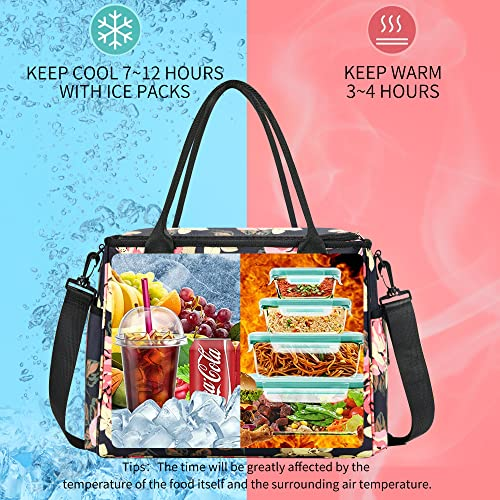
Cooler bags play a direct role in keeping food at the correct temperature from the moment it leaves the kitchen until it reaches the customer. This helps restaurants and delivery services meet food quality expectations.
Hot and Cold Retention
| Temperature Need | Purpose | Cooler Bag Function |
|---|---|---|
| Hot Meals | Keep food warm and appetizing | Thermal insulation retains heat |
| Cold Items | Preserve freshness of chilled goods | Cold retention prevents spoilage |
| Mixed Deliveries | Deliver both hot and cold in one trip | Compartmentalized bags separate contents |
Temperature preservation avoids soggy or dried-out food, maintaining texture and flavor. Bags with aluminum linings and thick insulation can keep food hot for over an hour and cold items fresh for even longer.
Industry Application
Pizza delivery services often use thick PE foam bags with reflective linings to keep pizzas hot until arrival. Cold drink vendors use gel-pack-cooled bags to deliver iced beverages without melting.
Food Safety and Hygiene
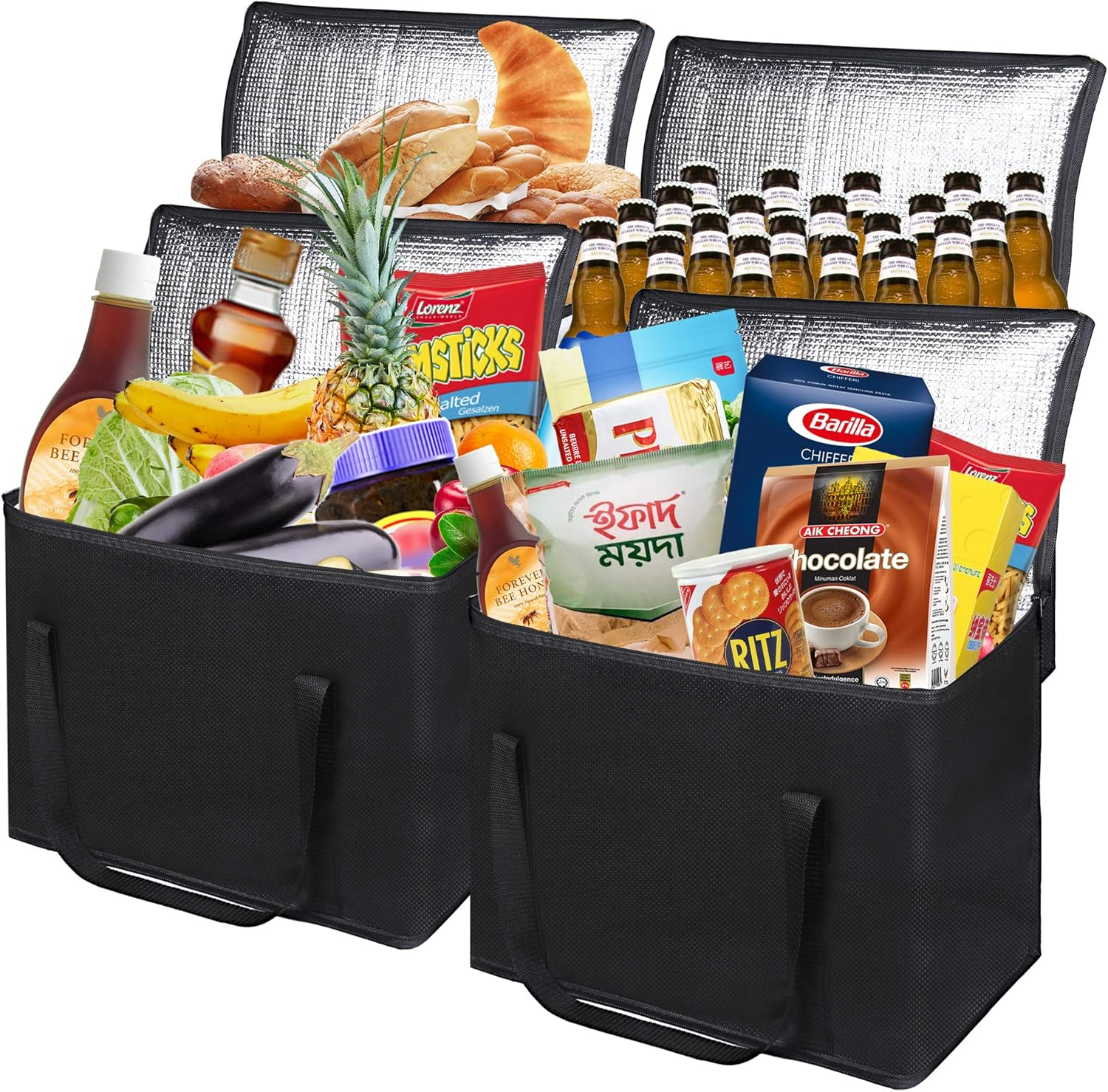
Delivering food at the right temperature is not just about comfort—it is also about safety. Food left in the temperature danger zone (40°F–140°F) for extended periods can harbor harmful bacteria.
Health Risk Mitigation
| Safety Risk | Cooler Bag Solution |
|---|---|
| Bacterial growth | Maintains safe temperature zones5 |
| Cross-contamination | Separate compartments and sealed designs |
| Spill and mess | Leak-proof inner layers |
Bags made with food-grade interiors also prevent contamination and are easy to clean between deliveries, which ensures compliance with health regulations.
Real-World Example
Dairy product deliveries require cold storage during transit. EPE foam cooler bags with aluminum foil linings help maintain milk and cheese under safe temperatures, reducing spoilage and regulatory risks.
Preventing Spills and Cross-Contamination
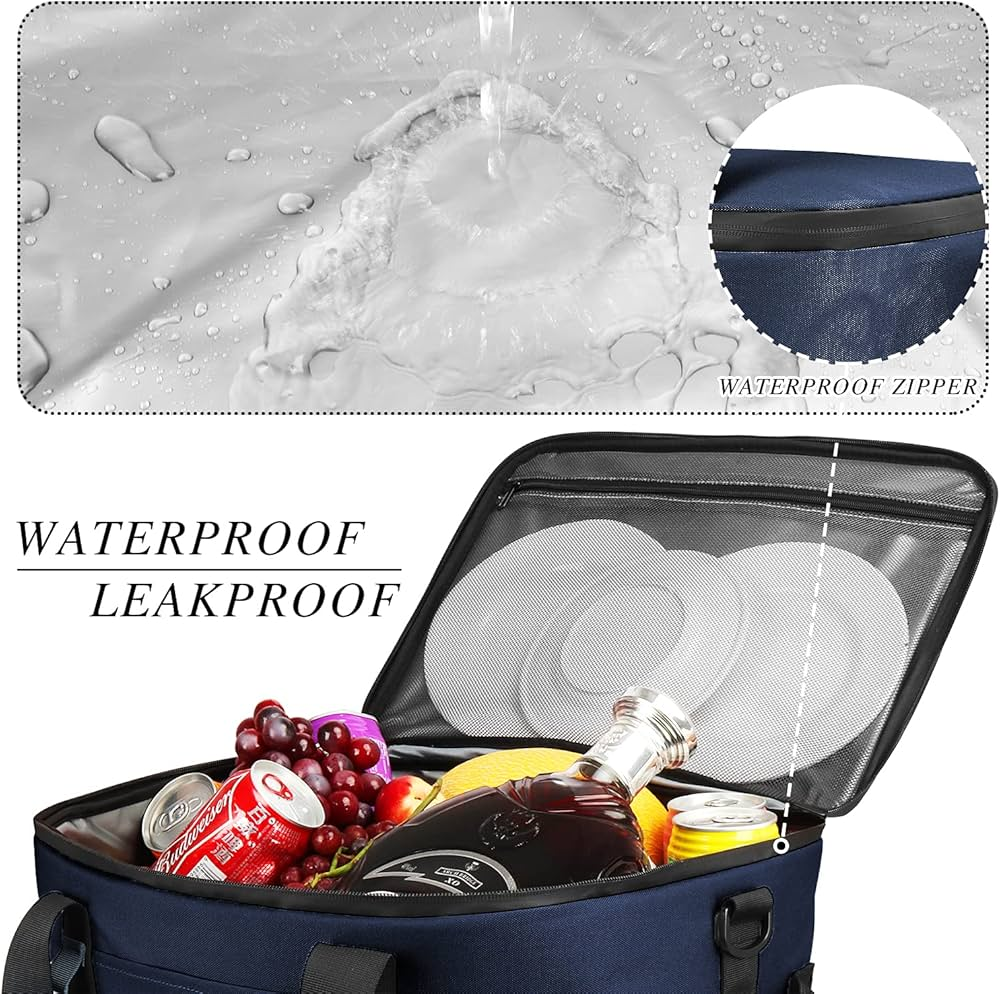
Spill control is a practical concern in food delivery. Uncontrolled spills not only ruin customer orders but also stain delivery vehicles and compromise safety.
Built-in Spill Management Features
| Feature | Benefit |
|---|---|
| Waterproof linings | Prevent leakage and stains |
| Zipper or Velcro closures | Secure contents inside |
| Internal separators | Isolate meals to avoid content mixing |
Cooler bags help ensure that soups, sauces, and greasy items are transported without leaking. This leads to a cleaner and more professional delivery experience.
Usage Insight
High-volume food delivery services often choose double-stitched, sealed cooler bags to reduce order loss due to mishandling or leakage in transit.
Operational Efficiency in Delivery
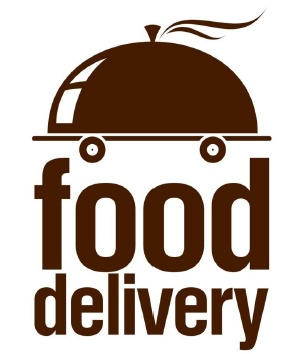
Cooler bags help streamline delivery operations by allowing couriers to carry multiple meals safely and efficiently.
Key Benefits to Delivery Workflow
| Efficiency Element | Impact |
|---|---|
| Multi-order capacity | Fewer trips, more orders per route |
| Compartmentalized design | Deliver hot and cold food together |
| Time savings | Quicker drop-offs reduce delivery windows |
Well-designed bags also support stacking and organization inside delivery vehicles, maximizing space and route management.
Case Example
A fast-casual restaurant chain equips all drivers with branded PE foam cooler bags that carry up to four orders simultaneously, separated by temperature zones, improving delivery timing and customer satisfaction.
Durability and Ergonomic Design
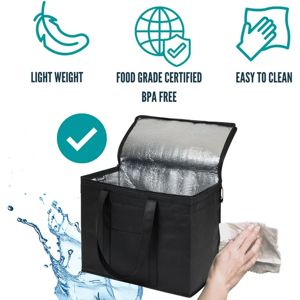
Cooler bags must handle frequent use in tough environments. Their durability6 and ease of use affect how reliably deliveries are made.
Material and Design Considerations
| Feature | Function |
|---|---|
| Tear-resistant outer shell | Withstands daily wear and tear |
| Adjustable shoulder straps | Improves comfort for delivery workers |
| Food-grade inner layers | Ensures hygiene |
Heavy-duty materials like PP woven or laminated non-woven fabric increase the lifespan of cooler bags, while ergonomic features help drivers manage long shifts more effectively.
Industry Perspective
Courier services appreciate bags with reinforced handles and waterproof interiors because they allow for faster cleanups and fewer replacements.
Waste Reduction and Sustainability

Cooler bags extend the usable life of delivered food and reduce waste due to spoilage or damage. This supports environmental and economic sustainability.
Environmental and Business Impact
| Factor | Cooler Bag Benefit |
|---|---|
| Food waste | Keeps meals edible longer |
| Packaging waste | Reduces need for excessive disposable wraps |
| Energy usage | Reduces reheating/cooling demands |
Restaurants using durable cooler bags can cut costs by reducing food re-preparation due to delivery mishaps.
Sustainable Practice Insight
Branded reusable cooler bags are being adopted by green-focused food delivery startups as a core element of their zero-waste policies.
Enhancing Customer Experience
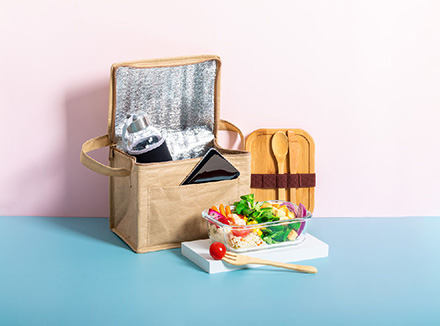
Customer satisfaction in food delivery depends heavily on receiving meals in excellent condition. Cooler bags play a key role in meeting these expectations.
Impact on Customer Loyalty
| Experience Factor | Cooler Bag Contribution |
|---|---|
| Food temperature | Hot meals stay hot, cold items remain cold |
| Order integrity | No spills or mixed items |
| Brand impression | Professional presentation improves reviews |
A high-quality bag with visible branding also reinforces the restaurant’s identity and leaves a lasting positive impression.
Example Use Case
One national burger chain launched co-branded insulated bags4 that boosted its delivery scores and reduced complaints related to soggy or cold food by over 30%.
Conclusion
Cooler bags have evolved from simple containers into key tools in food logistics. They help maintain temperature, ensure hygiene, prevent waste, and support better logistics operations. Whether your business handles hot meals, cold drinks, or mixed deliveries, choosing the right bag matters. Explore the full range of professional-grade cooler bags at https://zjjrpackaging.com/cooler-bag/, and find the one that fits your delivery needs.
Have you experienced the difference a good cooler bag makes in delivery? Share your insights below!
-
Understanding temperature control is crucial for ensuring food safety and quality during delivery. ↩
-
Explore how cooler bags contribute to food safety and hygiene in the delivery process. ↩
-
Learn how operational efficiency can improve delivery times and customer satisfaction. ↩
-
Insulated bags play a key role in maintaining food temperature; learn more about their advantages. ↩ ↩
-
Understanding temperature zones is essential for safe food delivery; find out more. ↩
-
Durability ensures cooler bags withstand frequent use, enhancing reliability in food delivery. ↩


